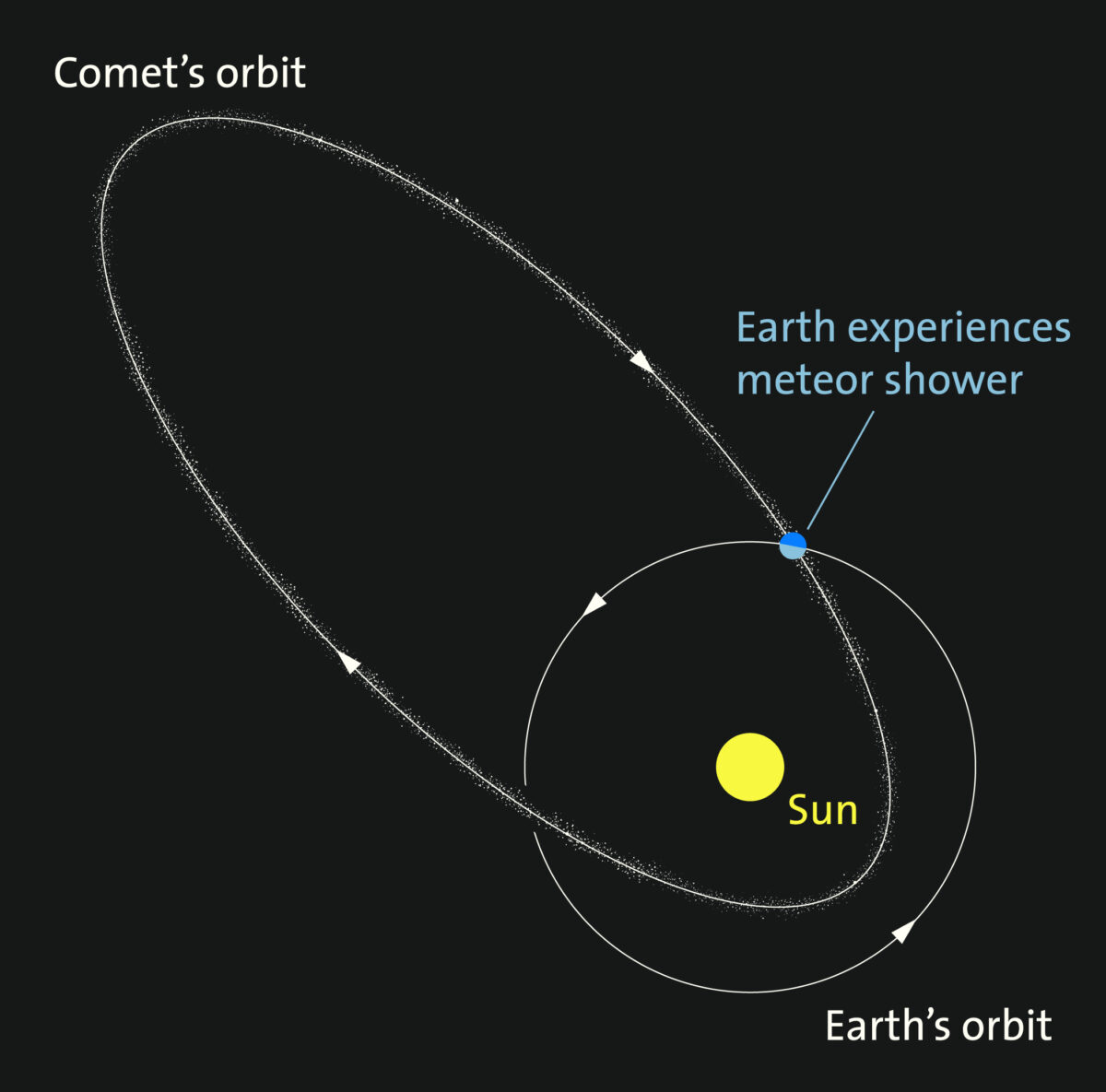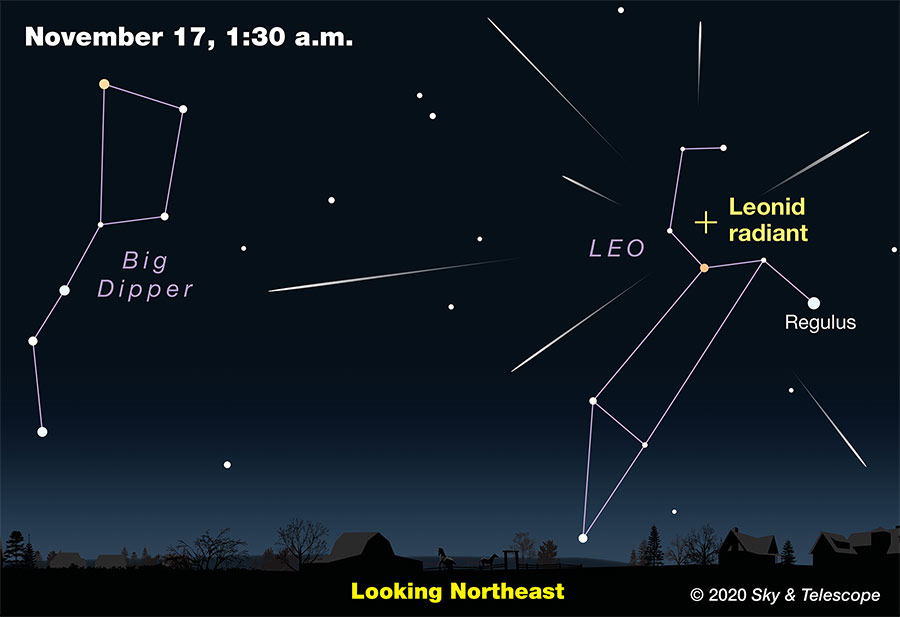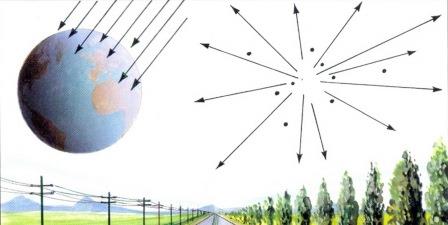For most people, if they are aware of a meteor shower, it is the Perseid shower in August. It’s pretty reliable, and it takes place at a time of year when being outside in the wee hours of the morning is actually pleasant.
But meteor showers occur at predictable times throughout the year, and there are some good ones coming this month and next. They are due to a comet (or rarely, an asteroid) that warms up when approaching the sun and kicks off dust particles. Those particles spread out all along the comet’s orbit. When the Earth intercepts that stream, a meteor shower takes place.

https://griffithobservatory.org/wp-content/uploads/2021/03/444.2_LM-PS-MC-12.003newwork_v2-1200×1185.jpg
The interception is at a specific place in Earth’s orbit, and therefore at a specific time of year. The remaining showers in 2024 and their peak times of activity are:
- Leonids: November 16-17.
- Geminids: December 12-13.
- Ursids: December 21-22.
And the objects responsible for each are:
- Leonids: Comet Temple-Tuttle
- Geminids: 3200 Phaeton (one of the few asteroids responsible for a shower)
- Ursids: Comet Tuttle
Meteor showers are named for the constellation from which they appear to radiate. For example, the Leonids appear to track back to the constellation of Leo.

https://dq0hsqwjhea1.cloudfront.net/Leonids_radiant_2020_900px.jpg
But this is a trick of perspective. The particles entering the atmosphere are actually on parallel tracks. They appear to diverge for the same reason that parallel railroad tracks appear to do so.

http://www.starlight-nights.co.uk/wp-content/uploads/2015/11/Meteor-Radiant-Diagram.jpg
The best time to see meteors is between midnight and dawn. That’s when the Earth encounters the particle stream “head on” without their having to catch up to the Earth in its orbit.

https://www.starryhill.org/graphics/meteorshowerbesttime_700.jpg
This is not a great year for any of these showers, unfortunately. The moon will be just past full for the Leonids, making it difficult to see any but the brightest meteors. For the Geminids, if you are willing to be outside around 4:30 am, the 88% full moon will have set, and you will have another 80 minutes or so before the sky begins to lighten up before dawn. The Ursids have the moon in the sky from a little before midnight and well past dawn.
Oh, well! Just as with your favorite baseball team that isn’t the Dodgers, wait ‘til next year!


